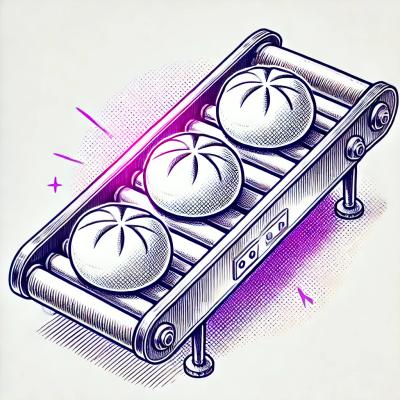
Security News
Bun 1.2 Released with 90% Node.js Compatibility and Built-in S3 Object Support
Bun 1.2 enhances its JavaScript runtime with 90% Node.js compatibility, built-in S3 and Postgres support, HTML Imports, and faster, cloud-first performance.
Create a stack of DOM elements. You can add/remove elements, reorder them, hide/show the elements, transit between them, or move them all together.
#DOM Stack
Create a stack of DOM elements. You can hide/show the elements, transit between them, or move them all together.
##Installation
npm install dom-stack
##How to use
###Initialize
Require and initialize dom-stack:
var Stack = require("dom-stack"),
stack = new Stack();
Let's say that we have five dom elements:
var sections = document.querySelectorAll("section");
var dom1 = sections[0];
var dom2 = sections[1];
var dom3 = sections[2];
var dom3 = sections[3];
var dom3 = sections[4];
###Add dom elements
You can add the dom elements. They will be removed from their current position in the DOM and be added to the stack.
stack.add(dom1);
stack.add(dom2);
stack.add(dom3);
stack.add(dom4);
stack.add(dom5);
###Remove dom elements
You can remove dom elements from the stack:
stack.remove(dom4);
stack.remove(dom5);
###Place the stack
You can attach the stack to a parent element. All the elements from the stack will be appended to main, in the same order that they were added. You can call place again to attach the stack to another dom element.
stack.place(document.querySelector("main"));
###Reorder dom elements:
Then you can reorder the elements.
stack.up(dom2); // the order will be: dom2, dom1, dom3
stack.down(dom1); // the order will be: dom2, dom3, dom1
Or you can move a dom element directly to a new location:
stack.move(dom3, 0); // the order will be: dom3, dom2, dom1
###Insert new dom elements
Let's reinsert the dom elements that we previously removed:
stack.insert(dom4, 0); // the order will be: dom4, dom3, dom2, dom1;
stack.insert(dom5, 3); // the order will be: dom4, dom3, dom2, dom5, dom1;
You can now where a dom element is at anytime, and how many dom elements you have:
stack.getPosition(dom5); // 3
stack.count(); // 5
###Hiding/showing elements
You can hide/show dom elements. The elements are not actually hidden, but totally removed from the DOM for performance reason.
stack.hide(dom4); // will hide dom4 by removing it from the dom.
When showing the element, it will be added back to the dom:
stack.show(dom4);
There's a short cut for hiding/showing them all:
stack.hideAll();
stack.showAll();
##Transit to a dom element
If you hide all elements but then show just one of them:
stack.hideAll();
stack.show(dom1);
You can then transit to another dom element, which will hide the previous one and show the new one:
stack.transit(dom2); // will hide dom1 and show dom2
MIT
FAQs
Create a stack of DOM elements. You can add/remove elements, reorder them, hide/show the elements, transit between them, or move them all together.
The npm package dom-stack receives a total of 2 weekly downloads. As such, dom-stack popularity was classified as not popular.
We found that dom-stack demonstrated a not healthy version release cadence and project activity because the last version was released a year ago. It has 1 open source maintainer collaborating on the project.
Did you know?

Socket for GitHub automatically highlights issues in each pull request and monitors the health of all your open source dependencies. Discover the contents of your packages and block harmful activity before you install or update your dependencies.

Security News
Bun 1.2 enhances its JavaScript runtime with 90% Node.js compatibility, built-in S3 and Postgres support, HTML Imports, and faster, cloud-first performance.

Security News
Biden's executive order pushes for AI-driven cybersecurity, software supply chain transparency, and stronger protections for federal and open source systems.

Security News
Fluent Assertions is facing backlash after dropping the Apache license for a commercial model, leaving users blindsided and questioning contributor rights.